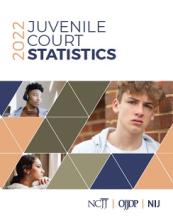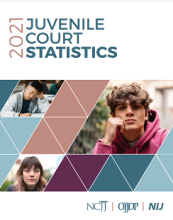Juvenile codes
Variations in Juvenile Law and Police Practice, Parts 1 and 2
Juvenile Court Statistics, 2022
Juvenile Court Statistics, 2021
Can Law Enforcement Training Address Racial and Ethnic Disproportionality? An Experimental Evaluation of Effective Youth Interactions
Juvenile Court Statistics, 2019
National Survey of Municipal Police Departments on Urban Quality of Life Initiatives
Is the Juvenile Justice System Lenient?
The Code of Silence in Schools: An Assessment of a Socio-Ecological Model of Youths Willingness to Report School Misbehavior
Criminalizing Delinquency: The Deterrent Effects of the New York Juvenile Offender Law
Classroom in Your Home Room
Contradictions and Consensus: Youths Speak Out About Juvenile Curfews
Juvenile Justice Reform in New York State - The Juvenile Offender Law
Debating DNA Collection
Do Juvenile Curfew Laws Work? A Time-Series Analysis of the New Orleans Law
Special National Workshop - State Legislative Strategies for Correctional Reform - Workshop Proceeding - Criminal Justice Research Utilization Program, May 19-20, 1980
Economical Crime Control: Perspectives from Both Sides of the Ledger
The surge in incarceration since 1980 has been fueled in part by the mistaken belief that the population can be divided neatly into "good guys" and "bad guys." In fact, crime rates are not determined by the number of at-large criminals, any more than farm production is determined by the number of farmers. Crime is a choice, a choice that is influenced by available opportunities as much as by character. This perspective, drawn from economic theory, supports a multi-faceted approach to crime control. Dr.
See the YouTube Terms of Service and Google Privacy Policy




